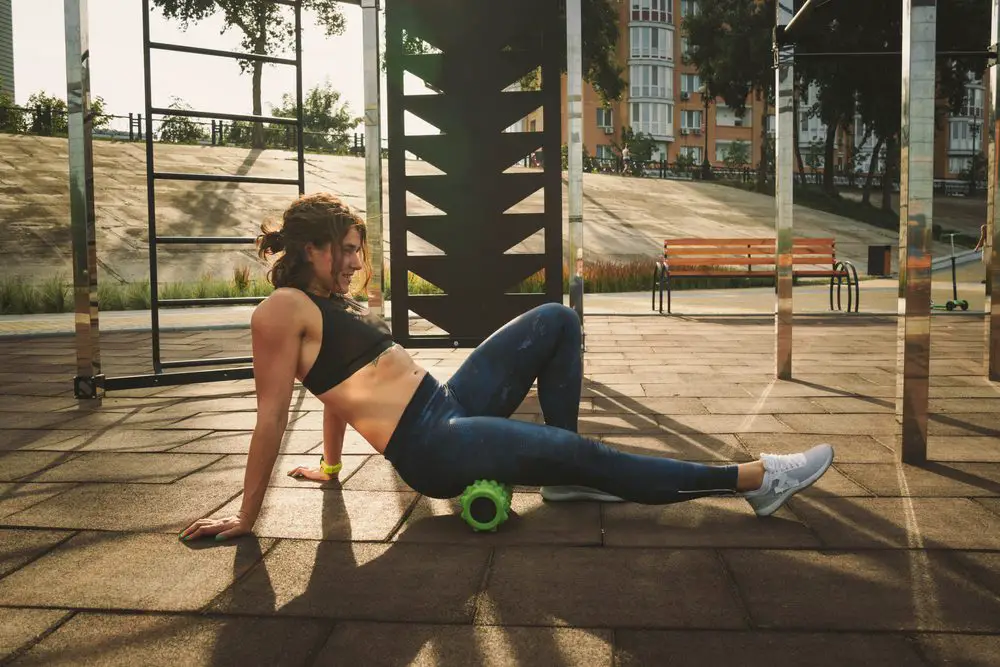Health

Pilates has many physical and even mental benefits, but there’s no denying that a good pilates session can leave you feeling sore.
While soreness is to be expected after any kind of muscle workout, it’s important to take steps to manage the aches so that you can continue to enjoy your pilates sessions.
Plus, in some cases, serious soreness can indicate that you have overstrained yourself, so it’s crucial to be aware of how much soreness is normal and when you need to give your body a rest.
Here’s everything you need to know about soreness and pilates, from reasons why you might hurt after a class and what you can do to manage that discomfort.
Causes Of Soreness After Pilates
Whether you’re a total beginner or a long-time pilates enthusiast, you might feel sore after a pilates class.
Beginners are often caught off guard by how sore they feel after trying pilates.
This is because pilates is, in many ways, similar to yoga, and there’s a big misconception that yoga and similar forms of exercise are ‘low-intensity’ or ‘easy’.
This is definitely not the case, and since pilates is generally more intense than yoga, it shouldn’t be surprising that your muscles are sore after such a workout.
Pilates is very much focused on engaging the core muscles, which many of us are not used to doing.
Your arms and legs will also be involved in most of the exercises, so they will probably be sore, too.
This is the result of your muscles forming very small tears under strain, which eventually repair and become stronger.
Even if you’ve been doing pilates for a long time, some soreness is to be expected.
Unless you stick to beginner-level pilates forever (which would mean not challenging yourself as you get stronger and more flexible), you’re going to need to boost the intensity and complexity of your workouts.
As you do this, your muscles will form the same tears they did at the beginning of your pilates journey because you’re putting your muscles under more strain.
Delayed-onset muscle soreness is especially common as you progress with pilates, meaning that you don’t feel the soreness until about 12 hours after your class.
Feeling sore after your pilates workouts isn’t usually a cause for concern, but if it’s really intense and getting in the way of your day-to-day life, it’s worth re-examining your workout schedule or checking in on your technique since working too hard or using improper form could be responsible.
How To Manage Pilates-Related Soreness
While soreness after pilates is normal, it can be annoying, especially if you practice pilates a lot and feel that your muscles don’t have time to recover between classes.
You could try to space out your classes more if that’s the case, but if you don’t want to reduce the number of workouts you do per week, the alternative is to manage the discomfort through various methods.
Here’s what we recommend doing if you want to minimize and manage the soreness you experience after a pilates session:
1. Do Your Stretches
If you’re a busy person, it can be tempting to skip your warmup before starting a pilates workout. However, doing this is a recipe for soreness.
Attending an in-person class that factors stretching into a warm up before getting into the more intense workout will help to make sure that your muscles aren’t too shocked by the strain of the exercises.
If you practice from home, please be disciplined with yourself and make sure to do at least a few basic stretches before you get going.
2. Prioritize Rest
Getting your full 8 hours at night will speed up your recovery because your body has more time to rest and repair.
Practicing good sleep hygiene is important to ensure that the sleep you’re getting is good quality.
Avoid blue light (phone screens) right before bed and try to get into a sleep routine where you go to bed around the same time.
3. Stay Hydrated

Water is your friend when it comes to muscle recovery (and just life in general).
Make sure you don’t go into a workout dehydrated, and top up your hydration levels with water after a session.
4. Fuel Up On Protein
High-protein foods will help to nourish your body and heal the tears in your muscles that are causing the soreness.
Try to get a good amount of protein before and after your workout to keep soreness at bay.
5. Keep Moving
While we did say earlier that making time to rest (sleep) is important, you should make sure to stay lightly active between pilates classes.
When you feel sore, it can be tempting to lay in bed feeling sorry for yourself, but this will decrease the blood flow to your muscles, making recovery slower.
Try to go for a walk or do some restorative yoga to ease the soreness.
6. Vary Shower Temperature
Switching between hot and cold water when you have a shower is a soreness-reducing hack that many people aren’t aware of.
Both hot and cold water have benefits for muscle recovery, with hot water sending more blood to the muscles and cold water can help to reduce inflammation by reducing the blood flow.
Of course, everyone is different, so try taking both hot and cold showers after pilates and see which one helps more.
You may find that both are helpful in different ways, in which case, alternating might be the best option.
7. Distinguish Between Soreness And Pain
We have been using the word ‘soreness’ and ‘discomfort’ as opposed to ‘pain’ throughout this article for a reason, and that’s because while soreness after pilates is fairly standard, intense pain is not normal.
If you’re in a lot of pain after pilates, you’re probably either working too hard or your form is off.
The latter is especially likely if you’re experiencing back pain since you should be engaging your core, arms, and legs enough during your workout to take pressure off your spine.
If your back or neck hurts after pilates, you should probably work on your posture.
One of the benefits of practicing in an in-person class is that an instructor can watch you and correct your form if necessary.
Most experts recommend practicing pilates 3 to 5 times per week.
If you’re a beginner and you’re doing 5 weekly classes, it’s possible that your pain is due to overworking.
Similarly, if you’ve been doing pilates for a while and trying to do a full hour of pilates every day, you’re probably in pain because you’re not giving your muscles enough time to repair.
Final Thoughts
It’s normal to feel some soreness after pilates regardless of how long you’ve been doing it for.
However, there are things you can do to ease the discomfort and get back to normal soon.
To speed up your muscle recovery and minimize soreness, hydrate yourself well and eat a lot of healthy, high-protein foods.
Make time for rest and sleep, but also make sure you’re doing light exercise to stimulate blood flow to your muscles without overstraining them.
Warm up with stretches before class and try switching between hot and cold showers to experience the benefits of both water temperatures for muscle recovery.





